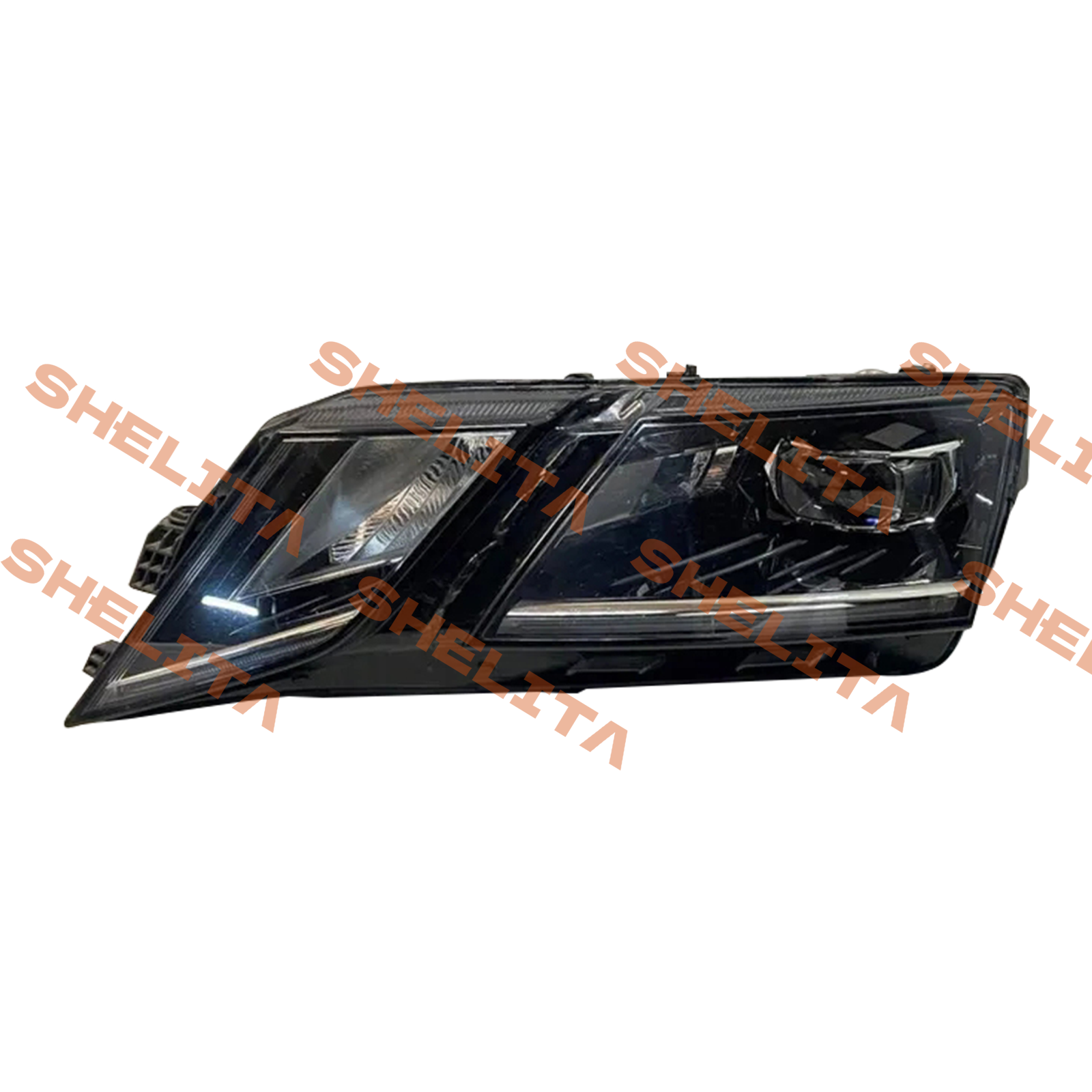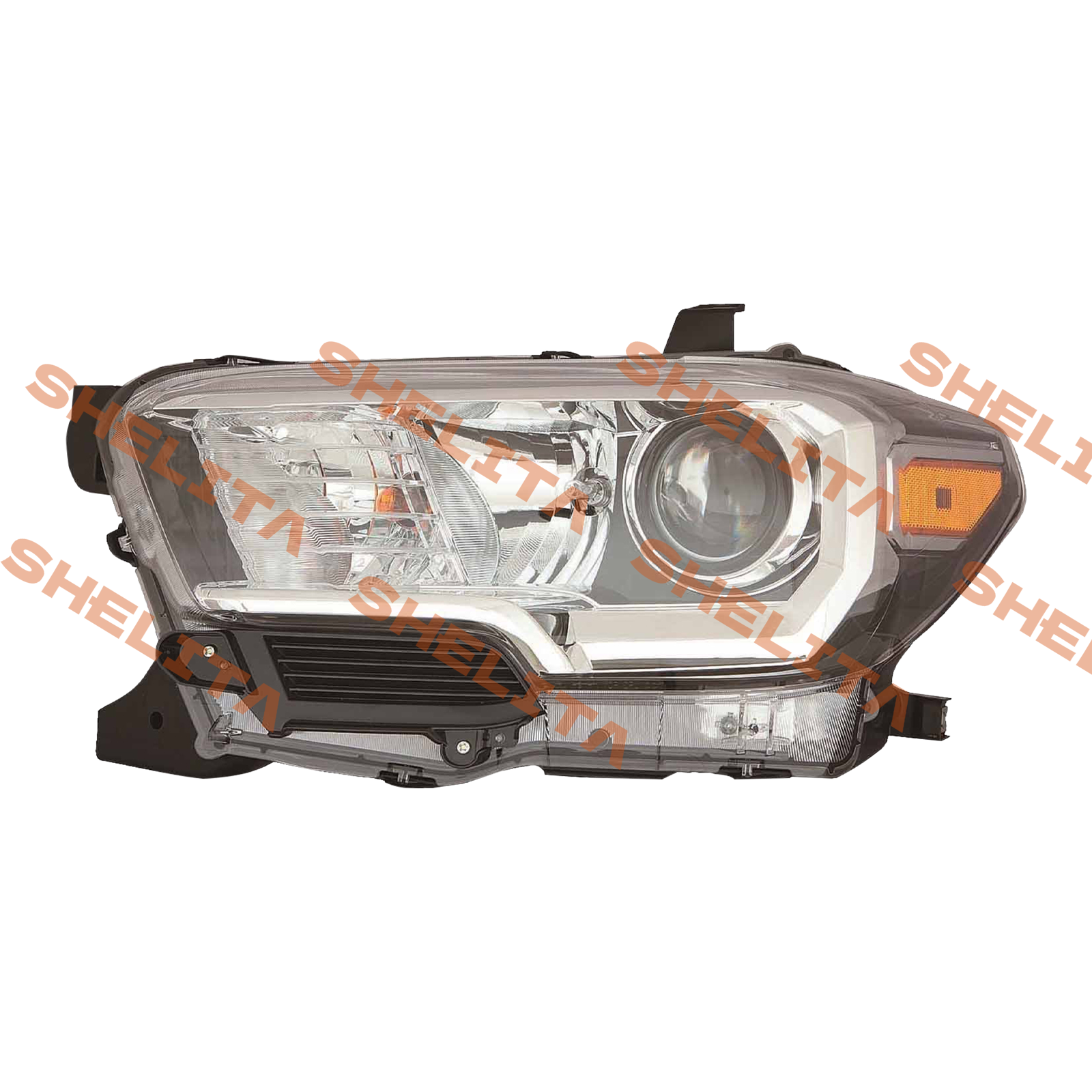Boosting Night Visibility: Key Features in Modern Headlight Assemblies
Essential Features in Modern Headlight Assemblies
Adaptive Beam Technology for Dynamic Illumination
The way headlights adapt to different driving situations is changing fast thanks to something called adaptive beam tech. These systems actually change where the lights shine depending on how fast the car is going, what direction it's turning, and even what kind of roads we're on. When this happens, drivers see much better at night, cutting down crashes quite a bit. Researchers from the Journal of Transportation Research found that these smart headlights boost visibility around 60% more than regular ones, especially when taking sharp turns or driving through rain or fog. What makes them really great is they don't just help us see better, they also stop blinding other cars coming the opposite way something every nighttime driver knows all too well. Car manufacturers are already starting to roll out these features across their models as part of making roads safer for everyone.
High-Intensity LED & Laser Light Sources
Car lighting has come a long way from those old fashioned halogen bulbs we used to see everywhere. The newer high intensity LED and laser options represent a real step forward in technology. What makes these so great? Well, they shine much brighter than traditional bulbs, eat up way less electricity, and last forever basically. Regular halogens need between 55 to 100 watts to work properly, whereas LEDs and lasers get the job done with fraction of that power consumption while still giving drivers excellent visibility. A recent study from Global Market Insights shows manufacturers are increasingly adopting this tech because it just makes sense both for longevity and environmental reasons. Drivers benefit from better night vision capabilities, and car makers can claim their designs are more energy efficient too.
Anti-Glare Matrix Systems
Headlights with anti-glare matrix systems really matter because they stop drivers coming the other way from getting blinded, yet still light up the road properly. What happens here is pretty neat actually these systems rely on smart sensors that constantly tweak how the headlamps shine. They basically figure out where cars are approaching from and then dim specific parts of the light beam so it doesn't blind those drivers. According to data from the Insurance Institute for Highway Safety, cars fitted with these kinds of tech tend to get into fewer crashes at night time. Makes sense when you think about it. After all, who wants to be staring into bright lights while trying to drive? These systems let everyone see clearly without putting others at risk, which is why more manufacturers are starting to include them as standard features nowadays.
Headlight Assembly Types & Performance Comparison
Projector vs. Reflector Beam Patterns
The beam patterns from projectors versus reflectors show pretty big differences when it comes to how they're built and how well they work. Reflector style headlights tend to be simpler affairs where the bulb sits inside a sort of bowl shape coated with reflective material that bounces the light outwards. What happens though is the light gets spread all over the place instead of going where we want it to. Projector headlights take a different approach by using lenses to concentrate the light into much cleaner, focused beams. The result? Better visibility at night without blinding everyone else on the road. Most people who've driven both types notice this difference right away. Sure, reflector systems save money upfront, but plenty of car owners these days are willing to pay extra for projectors because they look nicer too and actually perform better in real driving conditions.
HID vs. LED vs. Halogen Efficiency Ratings
When looking at HID, LED, and halogen headlights side by side, there's quite a gap between them when it comes to how efficient they are, how bright they shine, and just how long they stick around. LED lights are becoming all the rage these days because they eat up way less electricity and hang in there much longer than most alternatives. Some folks report these LED bulbs lasting so long that the car gets traded in before the lights need replacing! HID systems offer this really bright light spread across the road, but they drink more power than LEDs though not nearly as much as old school halogens. We still see plenty of halogen bulbs on roads today mainly because they cost less upfront and swap out easily when burned out. But let's face it, they don't throw as much light and wear out faster than both LED and HID options. Car manufacturers have been moving toward LED and HID tech pretty aggressively over recent years, mostly because these newer lighting solutions pack a bigger punch while saving fuel money in the long run.
Smart Sensor Integration in Auto Body Parts
When smart sensors get built into headlight systems, they completely change how lights respond to different road situations. The sensors keep checking the surrounding light levels and what's happening on the road surface, then tweak both brightness and beam direction automatically. Drivers don't need to fiddle with switches anymore because the system handles everything behind the scenes. Safety gets a real boost since drivers can see clearly whether it's pitch black at night or raining cats and dogs. Luxury automakers are getting on board with this tech fast these days. Take a look at newer BMWs and Audis for example their adaptive lighting systems do much more than just switch between high and low beams. These cars actually adjust the light pattern based on speed, steering input, and even detect oncoming traffic to avoid blinding other drivers. What was once considered cutting edge is now becoming standard equipment across many premium vehicle lines.
Premium Headlight Assemblies from Trusted Auto Body Suppliers
SK OCTAVIA 17- LED Assembly (OEM 5E1941017D)
The SK OCTAVIA 17 LED lights really step up the game when it comes to driving at night. These headlights pack serious brightness while still maintaining that sharp focus drivers need to see road markings clearly even when conditions get tough. Built right to match factory specs means they fit perfectly without any headaches during installation, plus they deliver solid performance mile after mile. Drivers who've swapped to these often mention how much safer their journeys feel, especially those long drives through rural areas where streetlights are few and far between. The improved illumination cuts down eye strain too, which makes those late night trips just a bit more comfortable overall.
TA COROLLA LE/SE 14-16 Collision-Ready Design
The TA COROLLA LE/SE 14-16 headlight assembly comes built tough with a design ready for collisions, so it holds up well even when roads get rough. What makes it stand out is how straightforward the installation process actually is, which gives car owners real confidence knowing their headlights will work properly once installed. Safety certifications are all there, checkmarked off by the books. Mechanics who specialize in fixing crash damaged cars often give these assemblies thumbs up because they tend to survive impacts better than many others on the market today. After an accident, drivers can still rely on these lights to function correctly, keeping everyone safer on the road.
TA TACOMA 16-18 Durable Housing Construction
Drivers who want their lights to last will find the TA TACOMA 16-18 headlight assembly built tough enough to stand up to years of use. The housing is constructed with materials meant to outlast typical alternatives on the market today. Water just rolls off these headlights thanks to their excellent waterproofing, and they handle bumps and vibrations without issue too. Road conditions can be brutal sometimes, but this assembly keeps working reliably even when things get rough. Plus there's a solid warranty backing all this up, which tells me the manufacturer really believes in what they're selling here.
Optimizing Headlight Performance for Night Driving
Proper Alignment with Auto Body Standards
Getting headlights properly aligned makes all the difference when driving at night. When headlights meet standard specifications, they actually work better at lighting up the road ahead, which cuts down accident risks significantly. Most automotive service centers perform thorough alignment tests as part of regular vehicle inspections to ensure everything meets minimum safety requirements. Drivers need to watch out for alignment issues though. Misaligned beams create blind spots and can blind other drivers coming from opposite directions, making roads dangerously unpredictable. A simple adjustment by a qualified technician often fixes these problems before they become serious hazards on dark highways.
Maintenance Tips from Collision Parts Experts
Keeping headlights working at their best requires regular maintenance. Most mechanics will tell drivers to clean those lenses regularly so fog doesn't build up and so the glass isn't constantly battling dirt, moisture, and road grime. When bulbs start to look dim or flicker, swapping them out makes all the difference for visibility. Headlight assemblies usually last somewhere between five and seven years give or take, though this can change based on how much someone drives and what kind of weather they face daily. Drivers should watch for when lights just aren't as bright as they used to be. Replacing them before they completely fail means better vision on dark roads and safer trips home after work.
Upgrading Through Certified Auto Parts Suppliers
When looking to upgrade vehicle lighting, going through certified auto parts vendors brings several advantages worth considering. Parts from these suppliers must pass rigorous testing protocols before hitting shelves, plus come with manufacturer backed guarantees covering any manufacturing flaws or premature breakdowns. Most consumers report fewer issues down the line when installing such components compared to cheaper alternatives purchased elsewhere. Many owners mention better illumination during evening drives after switching out old bulbs for newer models, while others appreciate how sleeker designs enhance their car's overall look. The combination of brighter beams at night and knowing the investment won't need replacing anytime soon makes certification an attractive option for those wanting both function and form in automotive modifications.




